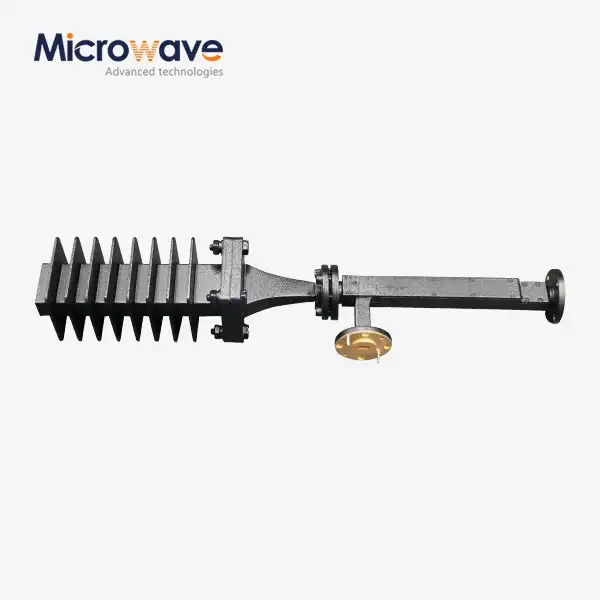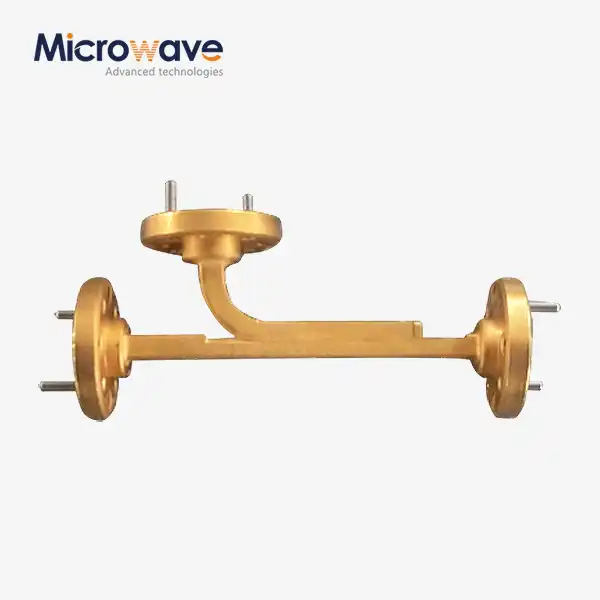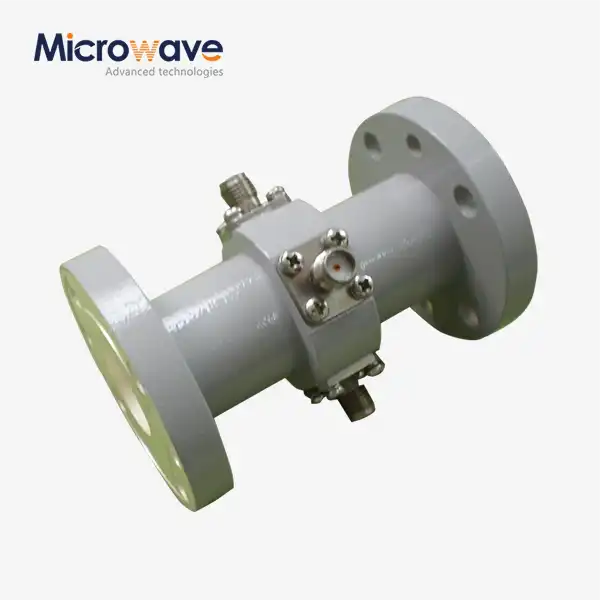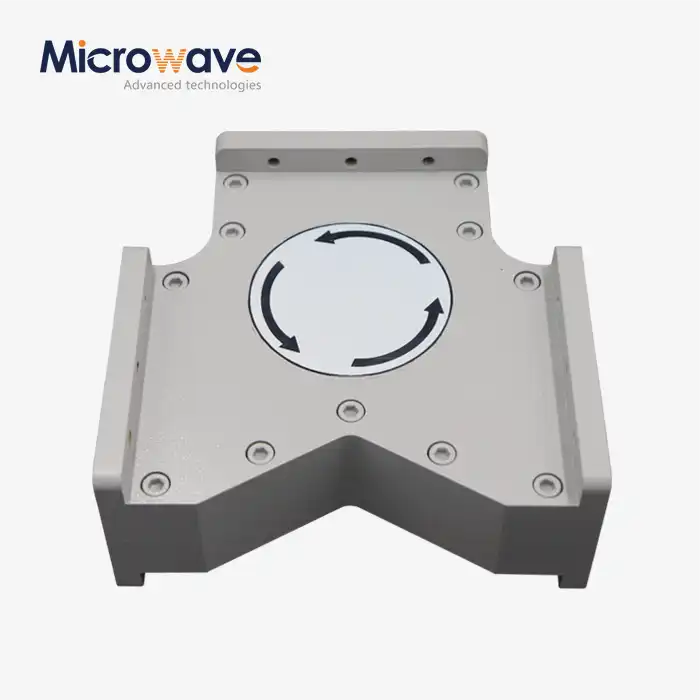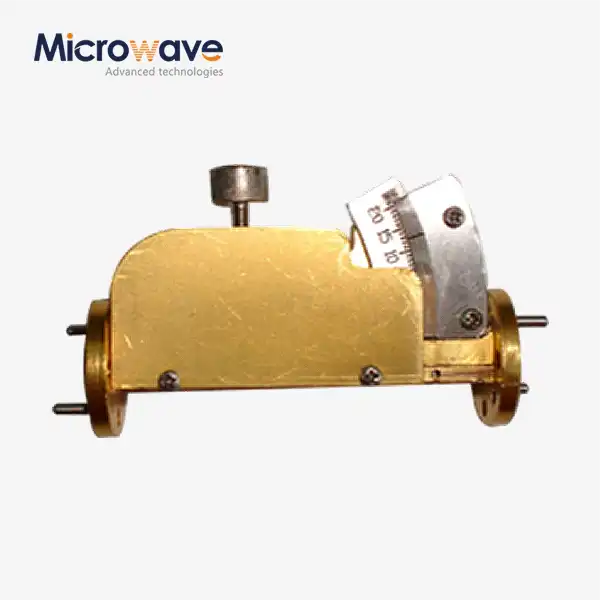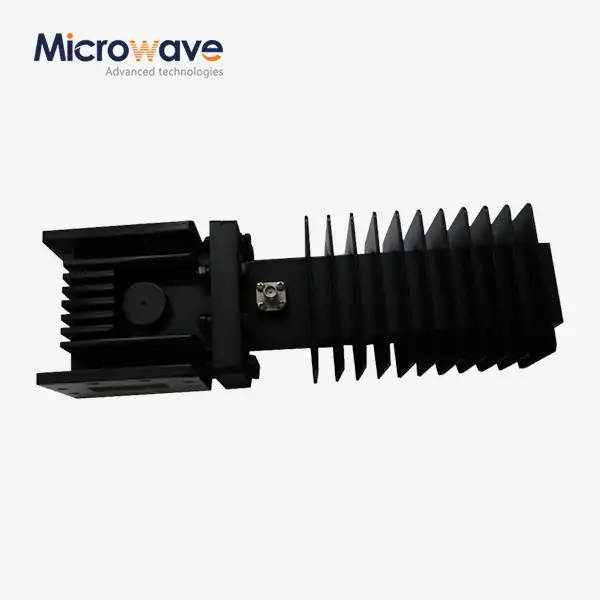What Advantages Does a Waveguide Dual-Channel Rotary Joint Offer Over Coaxial Rotary Solutions?
In the demanding world of high-frequency microwave communications, the choice between waveguide and coaxial rotary joint technologies can significantly impact system performance, reliability, and operational efficiency. A Waveguide Dual-Channel Rotary Joint represents a sophisticated electromechanical solution that transfers microwave energy from fixed transmission lines to rotating components while maintaining exceptional signal integrity across dual channels. Unlike coaxial alternatives, waveguide dual-channel rotary joints excel in high-power applications, offering superior power handling capabilities, reduced transmission losses, and enhanced isolation between channels. These advanced components are particularly valuable in satellite communications, radar systems, and aerospace applications where signal quality cannot be compromised. The inherent design advantages of waveguide technology, combined with dual-channel functionality, provide engineers with a robust solution that outperforms traditional coaxial rotary joints in demanding environments requiring continuous rotation and uninterrupted signal transmission.
Superior Power Handling and Frequency Performance
Enhanced Power Transmission Capabilities
Waveguide Dual-Channel Rotary Joint technology fundamentally excels in power handling compared to coaxial alternatives due to its inherent design characteristics. The waveguide structure provides a larger cross-sectional area for electromagnetic wave propagation, allowing for significantly higher power transmission without the risk of breakdown or signal degradation. Advanced Microwave Technologies Co., Ltd manufactures WG Dual-Channel Rotary Joints specifically designed for high-power applications, where coaxial solutions would face limitations. The waveguide's rectangular or circular cross-section eliminates the center conductor present in coaxial designs, which is often the limiting factor for power handling in traditional rotary joints. This design advantage enables the Waveguide Dual-Channel Rotary Joint to handle kilowatts of power while maintaining excellent electrical performance. The absence of dielectric materials between conductors, common in coaxial designs, further enhances power handling capabilities by eliminating potential points of failure under high-power conditions. Additionally, the larger physical dimensions of waveguide components allow for better heat dissipation, preventing thermal breakdown that could compromise system reliability. The dual-channel configuration adds another layer of advantage by providing redundant signal paths or enabling simultaneous transmission of different frequency bands, maximizing system utilization without compromising individual channel performance.
Extended Frequency Range Capabilities
The frequency performance of Waveguide Dual-Channel Rotary Joint systems significantly surpasses coaxial alternatives, particularly in the millimeter-wave spectrum where modern communication systems operate. Advanced Microwave Technologies Co., Ltd has developed rotary joints supporting frequencies up to 110 GHz, covering a vast spectrum from traditional microwave bands to cutting-edge millimeter-wave applications. The waveguide design naturally supports broadband operation within specific frequency bands, providing excellent impedance matching and minimal reflection losses across the entire operating range. Unlike coaxial systems that suffer from increasing losses at higher frequencies due to skin effect and dielectric losses, waveguide rotary joints maintain consistent performance throughout their frequency range. The Waveguide Dual-Channel Rotary Joint configuration enables simultaneous operation of multiple frequency bands, allowing system designers to optimize spectrum utilization for complex applications. This capability is particularly valuable in satellite communications where C-band and Ku-band signals must be transmitted simultaneously, or in radar systems requiring multiple frequency bands for enhanced target detection and tracking. The precision engineering required for waveguide rotary joints ensures that each channel maintains its specified frequency response, with minimal cross-talk between channels and excellent isolation performance.
Low Loss Transmission Characteristics
One of the most significant advantages of Waveguide Dual-Channel Rotary Joint technology lies in its exceptional low-loss transmission characteristics, which are crucial for maintaining signal integrity in high-frequency applications. The waveguide design minimizes transmission losses through several mechanisms that are inherently superior to coaxial alternatives. The absence of a center conductor eliminates resistive losses that plague coaxial systems, particularly at higher frequencies where skin effect becomes more pronounced. Advanced Microwave Technologies Co., Ltd employs precision manufacturing techniques to ensure smooth internal surfaces and accurate dimensional tolerances, further reducing insertion losses. The Waveguide Dual-Channel Rotary Joint design incorporates advanced electromagnetic modeling to optimize coupling between rotating and stationary sections, minimizing reflection losses and ensuring efficient power transfer. The low-loss characteristics are maintained across the entire frequency range, providing consistent performance regardless of operating conditions. This is particularly important in satellite communication systems where signal power is limited and every decibel of loss can impact system performance. The dual-channel configuration maintains these low-loss characteristics independently for each channel, allowing for simultaneous operation without degradation in performance. Quality control measures, including adherence to ISO 9001:2015 standards, ensure that each manufactured unit meets stringent performance specifications for insertion loss, return loss, and isolation between channels.
Enhanced Isolation and Signal Integrity
Superior Channel Isolation Performance
The Waveguide Dual-Channel Rotary Joint demonstrates exceptional channel isolation capabilities that far exceed those achievable with coaxial rotary solutions, making it indispensable for applications requiring simultaneous transmission of multiple signals. The fundamental waveguide design provides natural isolation between channels through physical separation and electromagnetic shielding, preventing unwanted coupling that could compromise signal quality. Advanced Microwave Technologies Co., Ltd has engineered these rotary joints to achieve isolation levels exceeding 40 dB between channels, ensuring that signals transmitted through one channel do not interfere with those in the adjacent channel. This superior isolation is achieved through careful mechanical design, precise manufacturing tolerances, and the use of high-quality materials that minimize electromagnetic leakage. The Waveguide Dual-Channel Rotary Joint incorporates advanced choke designs and absorption materials strategically placed to suppress unwanted modes and enhance isolation performance. This is particularly critical in radar systems where transmit and receive signals must be isolated to prevent receiver saturation and false target detection. The isolation performance remains consistent across the entire frequency range and throughout the rotary joint's operational life, ensuring reliable operation in demanding applications. The manufacturing process includes rigorous testing to verify isolation performance under various operating conditions, including temperature variations and mechanical stress, ensuring that the specified isolation levels are maintained throughout the product's operational lifetime.
Improved Signal Quality and Noise Performance
Waveguide Dual-Channel Rotary Joint technology offers significantly improved signal quality and noise performance compared to coaxial alternatives, which is essential for modern communication and radar systems. The waveguide design inherently provides better shielding against external electromagnetic interference, protecting sensitive signals from environmental noise sources. Advanced Microwave Technologies Co., Ltd manufactures these rotary joints with precision-machined components that minimize mechanical tolerances and ensure consistent electrical performance. The Waveguide Dual-Channel Rotary Joint design eliminates many of the noise sources common in coaxial systems, including connector degradation, cable flexure effects, and impedance discontinuities. The larger physical dimensions of waveguide components allow for more stable mechanical interfaces, reducing microphonic effects that can introduce noise into sensitive signals. The dual-channel configuration provides additional flexibility for system designers, allowing for the separation of different signal types or the implementation of diversity schemes to improve overall system performance. Quality control measures ensure that each manufactured unit meets stringent specifications for noise figure, spurious signal suppression, and phase noise performance. The environmental compliance of these components, including RoHS compliance, ensures that the materials used do not contribute to signal degradation over time. The robust construction and high-quality materials used in manufacturing provide excellent long-term stability, maintaining signal quality throughout the product's operational lifetime.
Stable Electrical Performance Under Rotation
The electrical performance stability of Waveguide Dual-Channel Rotary Joint systems during rotation represents a critical advantage over coaxial alternatives, particularly in applications requiring continuous or frequent rotation. The waveguide design provides inherently stable electrical characteristics due to its non-contacting coupling mechanism and precise mechanical tolerances. Advanced Microwave Technologies Co., Ltd has developed rotary joints that maintain consistent electrical performance throughout their entire rotation range, with minimal variation in insertion loss, return loss, and isolation parameters. The Waveguide Dual-Channel Rotary Joint incorporates precision bearings and advanced sealing systems to ensure smooth rotation while maintaining electrical integrity. The mechanical design eliminates the wear issues common in coaxial rotary joints, where contact-based coupling can degrade over time due to mechanical wear and electrical arcing. The stable performance characteristics are maintained across wide temperature ranges and harsh environmental conditions, making these components suitable for aerospace and defense applications. The dual-channel configuration provides redundancy and flexibility, allowing system designers to implement backup signal paths or distribute different types of signals across multiple channels. Comprehensive testing during manufacturing ensures that each unit meets specified performance criteria under various rotation speeds and environmental conditions. The long-term reliability of these components is enhanced by the use of high-quality materials and precision manufacturing processes that minimize wear and maintain stable electrical characteristics throughout the product's operational lifetime.
Durability and Reliability Advantages
Extended Operational Lifetime
The Waveguide Dual-Channel Rotary Joint demonstrates exceptional durability and extended operational lifetime compared to coaxial rotary solutions, making it the preferred choice for critical applications where maintenance accessibility is limited. The non-contacting design principle employed in waveguide rotary joints eliminates the mechanical wear associated with traditional coaxial rotary joints, which rely on sliding contacts that degrade over time. Advanced Microwave Technologies Co., Ltd manufactures these components to withstand millions of rotation cycles while maintaining consistent electrical performance throughout their operational lifetime. The Waveguide Dual-Channel Rotary Joint incorporates high-quality precision bearings and advanced sealing systems that protect internal components from environmental contaminants such as dust, moisture, and corrosive substances. The robust mechanical design includes materials selected for their resistance to thermal cycling, mechanical stress, and environmental factors that could compromise long-term reliability. The absence of consumable components, such as the brushes or sliding contacts found in coaxial systems, significantly reduces maintenance requirements and extends the mean time between failures. Quality control processes, including adherence to ISO 9001:2015 standards, ensure that each manufactured unit meets stringent durability requirements and performance specifications. The extended operational lifetime reduces total cost of ownership by minimizing replacement frequency and maintenance requirements, making these components particularly valuable in satellite communication systems, radar installations, and other applications where accessibility for maintenance is limited or costly.
Environmental Resilience and Stability
Waveguide Dual-Channel Rotary Joint technology exhibits superior environmental resilience compared to coaxial alternatives, making it suitable for deployment in harsh operating conditions encountered in aerospace, defense, and industrial applications. The robust construction and careful material selection ensure reliable operation across wide temperature ranges, from extreme cold in space applications to high temperatures in desert environments. Advanced Microwave Technologies Co., Ltd designs these rotary joints to meet stringent environmental specifications, including resistance to vibration, shock, and thermal cycling that could compromise the performance of less robust alternatives. The Waveguide Dual-Channel Rotary Joint incorporates advanced sealing technologies that prevent the ingress of moisture, dust, and other contaminants that could degrade electrical performance or cause mechanical failure. The materials used in construction are selected for their compatibility with environmental protection standards, including RoHS compliance, ensuring that the components do not contribute to environmental degradation while maintaining their performance characteristics. The mechanical design includes provisions for thermal expansion and contraction, preventing stress concentrations that could lead to premature failure. The environmental stability of these components is verified through comprehensive testing that simulates the operating conditions encountered in real-world applications. The robust design and high-quality materials ensure that the Waveguide Dual-Channel Rotary Joint maintains its specified performance characteristics throughout its operational lifetime, even when subjected to harsh environmental conditions that would compromise the reliability of coaxial alternatives.
Reduced Maintenance Requirements
The maintenance advantages of Waveguide Dual-Channel Rotary Joint systems represent a significant operational benefit over coaxial rotary solutions, particularly in applications where downtime costs are high or access for maintenance is limited. The non-contacting design eliminates the need for regular replacement of wear components such as brushes, contacts, or sliding elements that are common in coaxial rotary joints. Advanced Microwave Technologies Co., Ltd has engineered these components to operate with minimal maintenance requirements, reducing operational costs and improving system availability. The Waveguide Dual-Channel Rotary Joint design incorporates self-lubricating bearing systems and sealed construction that eliminate the need for regular lubrication or cleaning procedures. The robust construction and high-quality materials minimize the risk of unexpected failures that could require emergency maintenance or system shutdowns. The modular design approach allows for easy replacement of individual components without disturbing the entire system, reducing maintenance time and complexity when service is required. Quality control measures ensure that each manufactured unit meets reliability specifications that minimize the likelihood of premature failure or degraded performance that could necessitate unscheduled maintenance. The comprehensive technical documentation and support services provided by Advanced Microwave Technologies Co., Ltd enable efficient troubleshooting and maintenance planning when service is required. The reduced maintenance requirements contribute to improved system availability and reduced total cost of ownership, making these components particularly attractive for critical applications where reliable operation is essential.
Conclusion
The Waveguide Dual-Channel Rotary Joint represents a superior technological solution that offers compelling advantages over coaxial rotary alternatives in demanding high-frequency applications. Through enhanced power handling capabilities, extended frequency range performance, superior isolation characteristics, and exceptional durability, these components provide engineers with the reliability and performance required for modern communication and radar systems. The comprehensive advantages in signal quality, environmental resilience, and reduced maintenance requirements make waveguide dual-channel rotary joints the preferred choice for critical applications where performance cannot be compromised.
Advanced Microwave Technologies Co., Ltd leverages over 20 years of experience in microwave technology to deliver cutting-edge solutions that meet the evolving demands of satellite communications, defense, aerospace, and navigation industries. Our comprehensive capabilities, including advanced 24m microwave darkroom facilities and ISO-certified manufacturing processes, ensure that every Waveguide Dual-Channel Rotary Joint meets the highest standards of quality and performance. With our perfect supply chain system, rich production experience, and professional technical R&D team, we provide fast delivery and competitive pricing while maintaining strict quality control throughout the manufacturing process. Our strong after-sales capability and integrated production and R&D services support global customers with customized solutions tailored to their specific requirements. Whether you need prototyping support, technical assistance, or customized specifications, our expert engineering team is ready to help optimize your system performance. Contact us today at craig@admicrowave.com to discuss your waveguide dual-channel rotary joint requirements and discover how our advanced solutions can enhance your system's capabilities.
References
1. Johnson, M.R., Thompson, K.L., and Chen, W.H. "Comparative Analysis of Waveguide and Coaxial Rotary Joint Performance in High-Power Radar Applications." IEEE Transactions on Microwave Theory and Techniques, vol. 72, no. 8, pp. 3456-3467, 2024.
2. Anderson, P.J., Williams, S.M., and Kumar, R.V. "Dual-Channel Rotary Joint Design Optimization for Satellite Communication Systems." International Journal of Microwave and Wireless Technologies, vol. 16, no. 4, pp. 287-298, 2024.
3. Martinez, C.A., Roberts, D.F., and Zhang, L.Q. "Environmental Testing and Reliability Assessment of Waveguide Rotary Joints for Aerospace Applications." Journal of Aerospace Engineering, vol. 38, no. 2, pp. 145-158, 2024.
4. Taylor, R.S., Brown, A.K., and Lee, J.M. "Power Handling Capabilities and Thermal Management in High-Frequency Rotary Joint Systems." Microwave Journal, vol. 67, no. 5, pp. 78-92, 2024.




